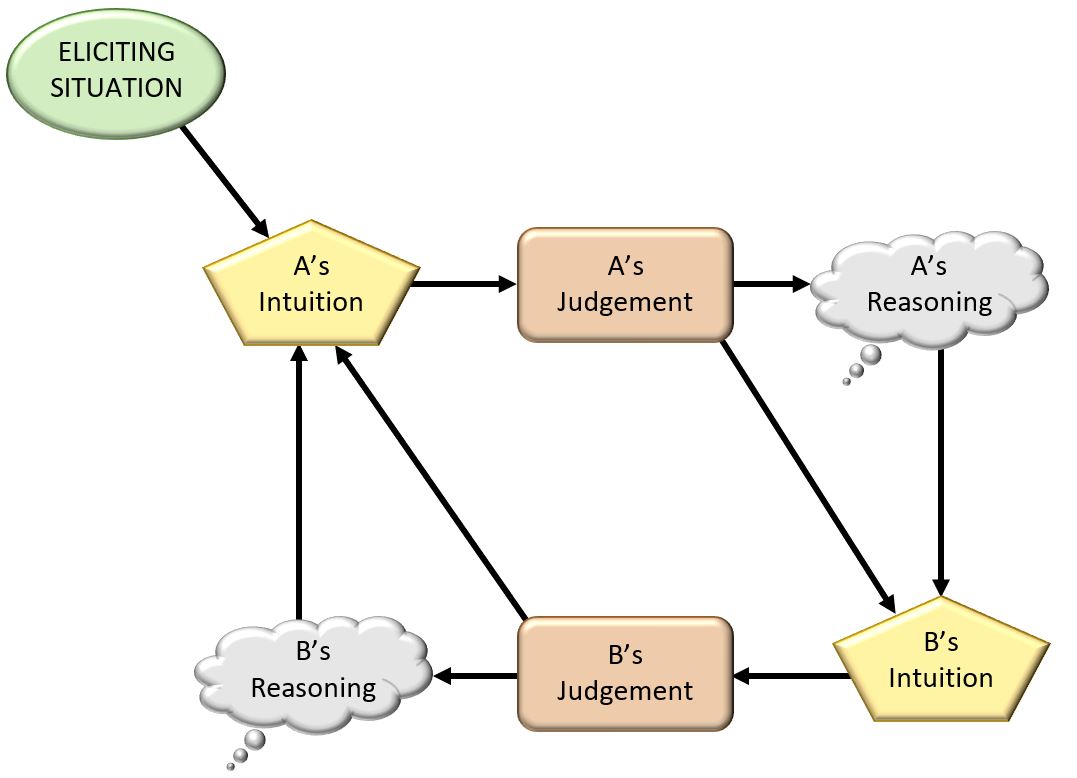6.3 Moral Development

An ongoing debate is whether morality is inherent or developed as a result of experiences. Moral development, according to the psychologist, Lawrence Kohlberg, develops as a structure of reasoning throughout life from punishment and obedience at the early stages, to conventional morality and authority in the later stages, following a divergent design[8].
| Kohlberg’s Levels of Moral Development | ||
|---|---|---|
| Level | Stage | Characteristics of Stage/Level |
| Preconventional | 1 | Punishment-Obedience Orientation |
| 2 | Instrumental Relativist Orientation | |
| Conventional | 3 | Interpersonal Concordance Orientation |
| 4 | Authority and Social-Order Maintaining Orientation | |
| Postconventional, Autonomous, or Principled | 5 | Social-Contract Legalistic Orientation |
| 6 | Universal Ethical Principle Orientation | |
Proper criticism is displayed about the theory, most notably from New York University psychologist, Jonathan Haidt, who challenges Kohlberg’s notion of early-stage moral development when good deeds are rewarded and bad ones are punished. Haidt argues good and bad actions are only perceptions, and not based on a priori response. For example, a child may be taught that an action for a cause is justifiable in the immediate circle, but is widely condemned by the general public[8]. This can be regarded as interconnected moral development. Haidt further points out that a more interdisciplinary approach of connected social systems needs to be introduced for moral reasoning, given the new knowledge, since the 1960s and 1970s [9].

Another area of moral development is the work of Reischl, Cavico, Mujtaba, and Pellet where cognitive moral development should progressively increase[10]. However, no correlation has been shown in the research reflecting this, with results being mixed or ineffective. Further conceptualization needs to continue in order to understand moral development, especially within an education setting.
The different theories of moral development have implications for teaching it. With what we now know about different concepts of moral development, how should it be taught? Kohlberg’s theory that moral development can be a structured approach that is life-long or Haidt’s theory of interconnected nodes offers a balance between tested and divergent methods for teaching. Democratic moral development is an individual’s moral learning throughout life from different sets of inferences toward freedom and autonomy. However, this is merely one definition in a field that has produced many differing conclusions.
In the activity below, analyze, interpret. and design your understanding of moral development by using the Kohlberg method.

